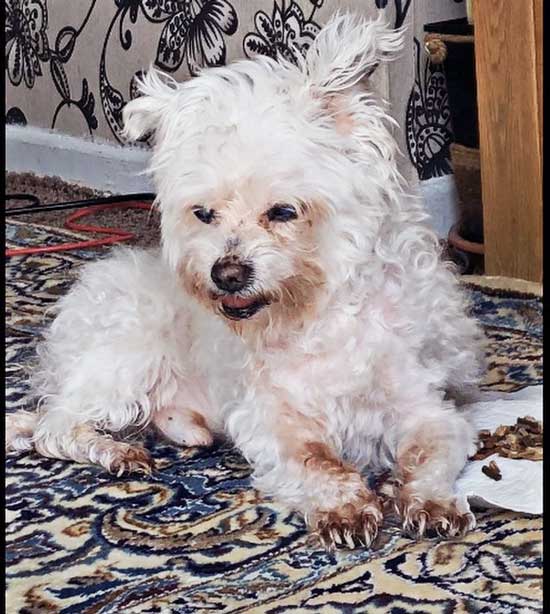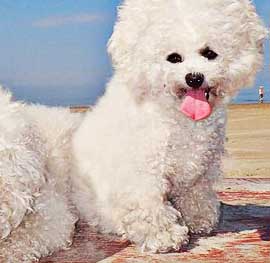Many dog owners use substances to whiten their dog’s fur. There are many natural bleaching agents, and they are safe to use on dogs. In order to whiten your dog’s fur, you will need to mix the bleaching agent with water to make the fur white again. The ratio of bleach to water will vary depending on how light or dark you want your dog’s fur to be. Once you have mixed the bleach and water, you will need to apply it to your dog’s fur. Be sure to avoid getting it in your dog’s eyes, nose, or mouth. After you have applied the peroxide to your dog’s fur, you will need to rinse it off with water. You may need to repeat this process several times in order to achieve the desired results. Many dog owners use hydrogen peroxide to whiten dog fur, but is it a good idea?
How to remove stains in white dog fur

One of the most annoying things about owning a dog is having to deal with the never-ending stream of stains they leave on your furniture and clothing and learn how to naturally remove stains from white dog fur. While there are some great commercial products available for treating pet stains, you can also achieve good results with a few simple household ingredients. One popular method is to mix one part white vinegar with two parts water, and then use this solution to blot the stain. For tougher stains, you can try spraying the area with a mixture of one part hydrogen peroxide and one part water on the dog’s fur and hair, and then letting it sit for five minutes before blotting it dry. If you have a light-colored dog, you may also want to try using shampoo or dish soap to treat the stain, as these products can help to remove color from the white fur. Whichever method you choose, always remember to test it on an inconspicuous area first to make sure it won’t damage your fabric.
How does whitening work?
When hydrogen peroxide is applied to dog fur, it breaks down into water and oxygen to clean white dog fur. The oxygen bleach then lifts the dirt and stains from the fur, leaving the fur looking much lighter in color. This is often used to whiten dog fur, as it is a safe and gentle way to brighten up the coat. However, it is important to note that peroxide can also discolor pale fur, so it is important to test the product on a small area of the coat before using it on the entire dog. When used carefully, this can help to keep your dog’s fur looking its best white shade.
Is hydrogen peroxide safe for dog’s fur?
Yes, using hydrogen peroxide is currently considered safe for use on whitening dogs fur. However, it is important to note that you should never get this product in their eyes, nose, or mouth. Always supervise your pet dog after cleaning them with this item to ensure they don’t lick it off when grooming themselves.
If your dog’s fur is looking a little dull, there are a few things you can do to help brighten it up. One simple way to whiten dog fur is to mix equal parts hydrogen peroxide and water. Then, use a clean cloth to apply the mixture to your dog’s fur, being careful to avoid the eyes and ears and whiten the fur.
Whitening Dogs Fur Naturally
A natural way to whiten dog’s fur is to add a tablespoon of baking soda to the mixture for extra cleansing power. Let the mixture sit on your dog’s fur for 5-10 minutes before rinsing it off with warm water.
Another way to brighten up your dog’s fur is to give them a lemon juice bath. Simply mix fresh lemon juice with warm water and use it to rinse your dog’s fur. The acid in the lemon juice will help to break down any dirt or debris that is clinging to the fur, leaving it looking shiny and new. Be sure to rinse the lemon juice out well, as it can be drying to the skin if left on for too long. You can also add a teaspoon of olive oil to the lemon juice bath for extra softness and shine. With just a little effort, you can help whiten your dog’s fur and keep them looking their best. Therefore eliminating brown or yellow stains from their fur.
One of the most annoying things about owning a dog is having to deal with the never-ending stream of stains they leave on your furniture and clothing. Dogs can also leave licking stains on the fur around their mouth. They can also have issues with urine stains on their fur when out walking. Another problem with white dogs such as Maltese and Bichon Frise and even poodles is that they often have tear stains around the dog’s eyes. While there are some great commercial products available for treating pet stains, you can also achieve good results with a few simple household ingredients.

One popular method is to mix one part white vinegar with two parts water, and then use this solution to blot the stain. For tougher stains, you can try spraying the area with a mixture of one part hydrogen peroxide and one part water, and then letting it sit for five minutes before blotting it dry. If you have a light-colored dog, you may also want to try using shampoo or dish soap to treat the stain and brighten the fur, as these products can help to remove the color from the fur. Whichever method you choose, always remember to test it on an inconspicuous area first to make sure it won’t damage your fabric. This is an important part of dog care such as trimming your dog’s nails and brushing their fur.
Any pet owner knows that brown fur stains are an inevitable part of life with a furry friend. Whether it’s mud from a romp in the park or food from an accidental spill, stains can quickly become set-in in your dog’s hair and difficult to remove. When it comes to cleaning white dog fur, the first step is to identify the type of stain. Water-based stains, like mud or saliva, can usually be removed with a simple shampooing. However, oil-based stains, like grease or food, require a more heavy-duty approach. To clean oil-based stains, start by blotting away as much of the excess grease as possible. Then, apply a pet-safe detergent to the area and use a brush to work it into the fur. Be sure to rinse thoroughly to avoid any irritation. With a little patience and the right cleaning supplies, those pesky yellow stains will be gone in no time!